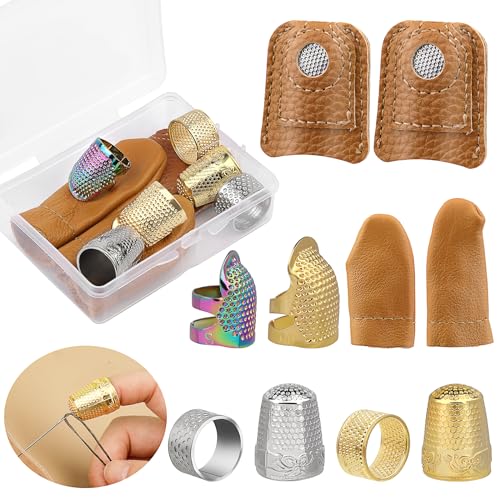The History of Thimbles
Thimbles have been used for centuries to protect the fingers of seamstresses and needleworkers while they work. These small, cone-shaped devices are worn on the finger and typically have a dimpled top to push the needle through fabric. Over the years, thimbles have evolved in design and materials to suit the needs and preferences of users. In this article, we will explore the different designs of thimbles and their purposes.
Traditional Thimbles
Traditional thimbles are usually made of metal, such as brass, silver, or gold. They have a domed shape with a dimpled top and may feature engraved patterns or decorative designs. These thimbles have been used for centuries and are often considered collector’s items. They are suitable for general sewing and quilting projects and provide good protection for the finger.
Open-Top Thimbles
Open-top thimbles, also known as coin thimbles, have a flat or open top instead of a dimpled one. This design allows for better control and precision when working with smaller needles and delicate fabrics. Open-top thimbles are often made of lightweight materials, such as plastic or aluminum, to ensure flexibility and comfort during use.
Grooved Thimbles
Grooved thimbles, as the name suggests, have vertical grooves or ridges along the sides. These grooves provide added grip and make it easier to hold onto the needle while sewing. This design is particularly useful for those working with thick fabrics or when using thicker needles for heavy-duty sewing projects. Grooved thimbles are typically made of metal, providing durability and strength.
Thimble Rings
Thimble rings are a popular alternative to traditional thimbles. Instead of wearing a cone-shaped device, the thimble is worn as a ring on the finger. Thimble rings often have an open design with an adjustable band, allowing for a comfortable and secure fit on different finger sizes. These rings are commonly made of metal or plastic and provide a convenient and stylish option for needlework enthusiasts.
Specialty Thimbles
In addition to the traditional designs, there are also specialty thimbles available for specific purposes. Leather thimbles are designed for use with leather or tough materials and provide a better grip when pushing needles through dense fabrics. Silicone thimbles are heat-resistant and are commonly used for ironing or pressing seams. There are also ergonomic thimbles with padded tops or finger grips, providing extra comfort for those with sensitive fingers or joint issues.






